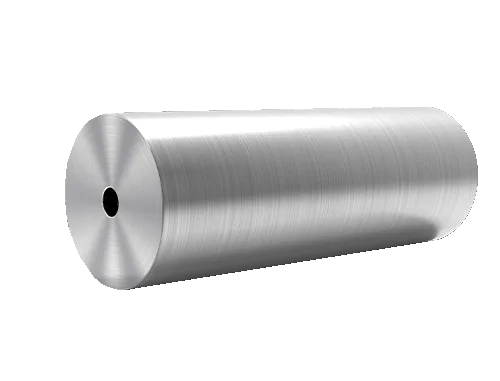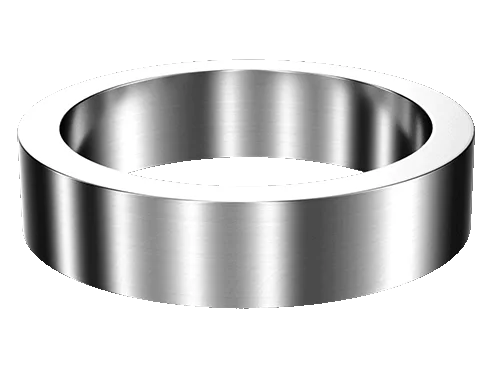Shandong Qilu lndustrial Co.,Ltd.
Exploring the Role of Aerospace Forgings in Modern Aviation
Introduction

Aerospace forgings play a pivotal role in the modern aviation industry, providing strength, reliability, and efficiency to crucial components of aircraft. In this blog post, we delve into the significance of aerospace forging, their manufacturing processes, applications, and the advancements driving innovation in this field.
Understanding Aerospace Forgings
Aerospace forgings are metal components manufactured through the process of forging, wherein metal is shaped using compressive forces. These forgings exhibit superior strength-to-weight ratios compared to cast or machined parts, making them ideal for critical aerospace applications.
Properties of Aerospace Forgings
Aerospace forgings boast exceptional mechanical properties, including high tensile strength, fatigue resistance, and impact toughness. These properties ensure the structural integrity and longevity of aircraft components, even under extreme operating conditions.
Manufacturing Process
The manufacturing of aerospace forging involves several intricate steps, including material selection, preheating, forging, and heat treatment. Advanced techniques such as closed-die forging and precision machining are employed to achieve precise geometries and tolerances required for aerospace applications.
Applications in Aviation
Aerospace forging find widespread use in various aircraft components, ranging from landing gear and engine components to structural elements like wing spars and bulkheads. Their reliability and performance make them indispensable in ensuring the safety and efficiency of aircraft operations.
Advancements and Innovations
The aerospace forging industry continues to evolve with advancements in materials, manufacturing processes, and design techniques. Innovative approaches such as additive manufacturing and the use of advanced alloys are pushing the boundaries of what is achievable in terms of performance, weight reduction, and cost-effectiveness.
Additive Manufacturing
Additive manufacturing, also known as 3D printing, is revolutionizing the production of aerospace forging by allowing for complex geometries and customized designs. This technology enables the creation of lightweight yet durable components, optimizing fuel efficiency and enhancing aircraft performance.
Advanced Alloys
The development of high-strength alloys, such as titanium and nickel-based superalloys, has further enhanced the properties of aerospace forgings. These materials offer superior corrosion resistance, temperature stability, and fatigue strength, making them ideal for critical aerospace applications.
Applications of Aerospace Forgings

| Component | Application |
|---|---|
| Landing Gear | Main structural support for landing and taxiing |
| Engine Components | Turbine disks, shafts, and compressor blades |
| Wing Spars | Primary load-bearing structures in aircraft wings |
| Bulkheads | Structural partitions providing strength and rigidity |
| Fuselage Frames | Framework supporting the aircraft’s main structure |
Conclusion
Aerospace forgings play a vital role in the modern aviation industry, providing the strength, reliability, and performance required for safe and efficient flight. From landing gear and engine components to structural elements, these forgings are integral to the construction of aircraft, ensuring their durability and resilience under demanding conditions. As technology continues to advance, the aerospace forging industry will undoubtedly play a pivotal role in shaping the future of aviation.
FAQ
Q:What materials are commonly used in aerospace forgings?
A:Aerospace forging are often made from high-strength alloys such as titanium, aluminum, and nickel-based superalloys.
Q:How are aerospace forgings manufactured?
A:Aerospace forging are typically produced through the process of forging, which involves shaping metal using compressive forces. This can be done through techniques such as closed-die forging or open-die forging.
Q:What are the advantages of using aerospace forgings in aircraft construction?
A:Aerospace forging offer superior strength-to-weight ratios, enhanced mechanical properties, and greater reliability compared to cast or machined parts. They also provide the structural integrity required for critical aircraft components.
Q:Are aerospace forgings cost-effective?
A:While the initial manufacturing costs of aerospace forgings may be higher compared to other methods, their durability and performance often result in long-term cost savings due to reduced maintenance and downtime.
Q:How do advancements in aerospace forging technology impact the aviation industry? A:Advancements in aerospace forging technology drive innovation in aircraft design, leading to lighter, more fuel-efficient aircraft with improved performance and safety standards.
